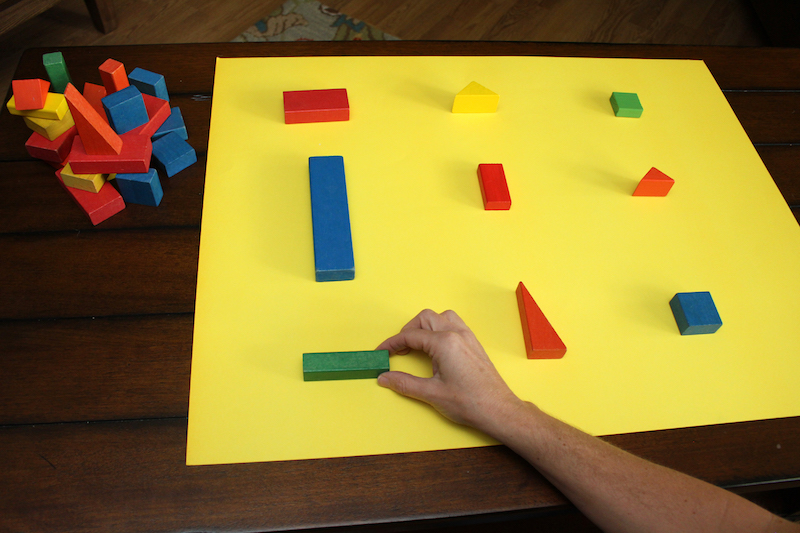
27 Sep Preschool Math Activity: Play a matching game
How important are preschool math activities? Very important, according to research from early childhood experts. Learning key skills through preschool math activities can actually predict your child’s success later in school.
According to a report by the Education Commission of the States (ECS), “early knowledge of math not only predicts later success in math, but also predicts later reading achievement even better than early reading skills.”
So when should children begin learning concepts of math? As early as possible, according to experts. And preschoolers are like little sponges. They can soak up simple math concepts just through everyday activities. In an article published in the Early Childhood Research & Practice journal, researchers noted that “the most remarkable growth of mathematical knowledge occurs between the pre-kindergarten and grade 2 levels.”
What preschool math skills can children ages 3 to 5 learn?
Through play and simple math activities, preschoolers can learn to:
- understand sizes, shapes, and patterns
- rote count (memorize the names of numbers up to 10 and 20)
- recognize numerals
- identify more and less of something
- count objects (understand that two objects equal the number 2)
- understand directionality (over, under, next to, and so on)
So, how can you provide your preschooler with a good math foundation before she walks into the elementary classroom?
One way is to simply add preschool math activities into your everyday routines. You can sneak in basic math concepts when you’re at the grocery store, in the bathtub, and even during meals. Here are 5 easy ways:
- Point out different shapes to your child, such as triangle-shaped and square signs. Help her count items in your shopping cart at stores.
- Let your child gather rocks on a nature walk. Then guide her to compare the rocks according to size.
- Sing counting rhymes in the bathtub. Sort bathtime toys according to color, size, or shape.
- Arrange patterns of food during meals, such as colors of different berries.
- Let your child help set the table. Guide her to count out plates, napkins, and silverware for each member of the family.
You can also introduce your child to some simple preschool math activities with toys that she already has, such as the blocks we use in the Shape Matching Game below.
But how is “matching” a preschool math skill?
Matching is one of the earliest math concepts to develop in children, according to the ECRP researchers. This skill forms the beginnings of logical thinking. Through matching, children learn one-to-one correspondence (one block equals the number one). One-to-one correspondence is necessary for higher-level math skills. Once children understand basic one-to-one correspondence, they can apply this concept to activities that involve equivalence (“this is equal to that”) and the idea of “more or less,” according to research.
And through matching with shapes, children explore several different simple math concepts. They can learn that an object stays the same size and shape even when it is positioned differently. They begin to learn the basics of measurement (“This triangle is bigger than that triangle.”) And, children can learn how to compare different objects, another early math skill that leads to classifying.
So let your child play with blocks and explore some simple math concepts at the same time. Try our Shape Matching Game and see what she learns.
Shape Matching Game
You will need:
- colored masking tape or painter’s tape
- posterboard *
- table
- shape blocks of different sizes (square, rectangle, triangle, and so on) **
* If you don’t have posterboard, you can just use painter’s tape (easily removable) to tape the outlines directly on a floor or table.
** If your child doesn’t like blocks or doesn’t have them in her toy collection, then just use cut-out cardboard shapes or construction paper shapes instead.
Set up the game
- Select blocks that will fit on the posterboard with at least three inches of space around them. For example, you can choose different types and sizes of triangles and different sizes of rectangles and squares.
- Place the shapes at least three inches apart on the posterboard.
- Trace the shapes with the masking tape or painter’s tape, attaching the tape directly to the posterboard.
- Take the actual shapes off the board when you are done tracing. You will have a posterboard with taped outlines of the different shapes.
Play the game
Put the posterboard on a flat surface such as a hard floor or table. Set out the blocks you used and invite your child to match the blocks to the shapes on the posterboard. As she places each shape into its outline, help her name its shape.
Wait, there’s so much more you can do with this game. Extend it!
- Encourage your child to find other blocks that match the shape outlines.
- Cut out the same shapes from construction paper and have your child match these shapes to the outlines, too.
- Have your child color inside the shape outlines or trace the shapes with her finger.
- Encourage your child to count the sides of the shapes as he places them inside the outlines.
- Flip over the posterboard and help your child cover this side with his own shape outlines, cutting the tape with safety scissors and placing it around the shapes.
- Use different colors of tape that correspond to the colors of the blocks to add an additional color-matching challenge.
You can find hands-on preschool math activities in every box of the Dilly’s Tree House family engagement program, too! Each activity only takes about 10 to 15 minutes a day and all materials except common household items are included. LEARN MORE.
Be sure to let us know how your Shape Matching Game goes in the Comments section below. And share your own variations, of course!
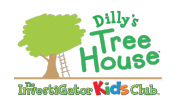
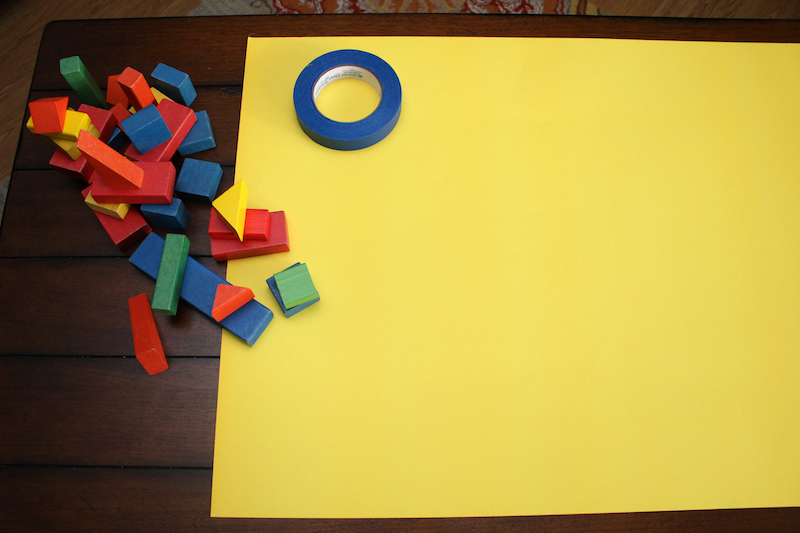
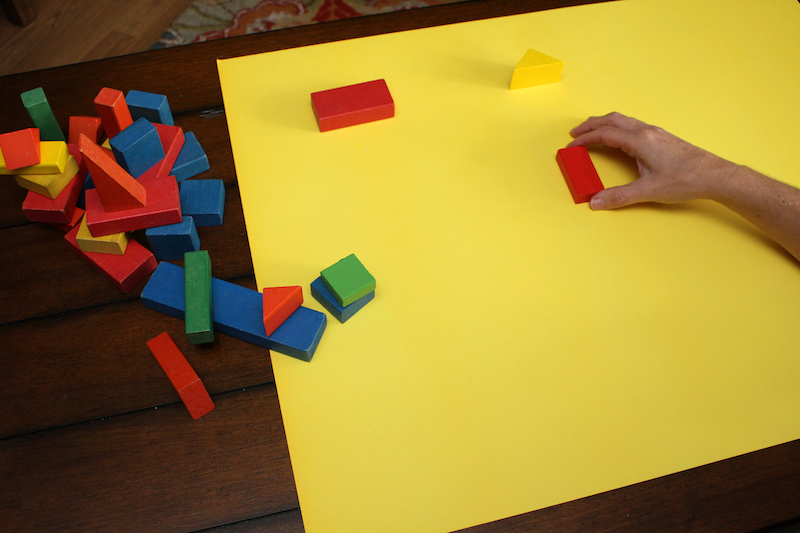
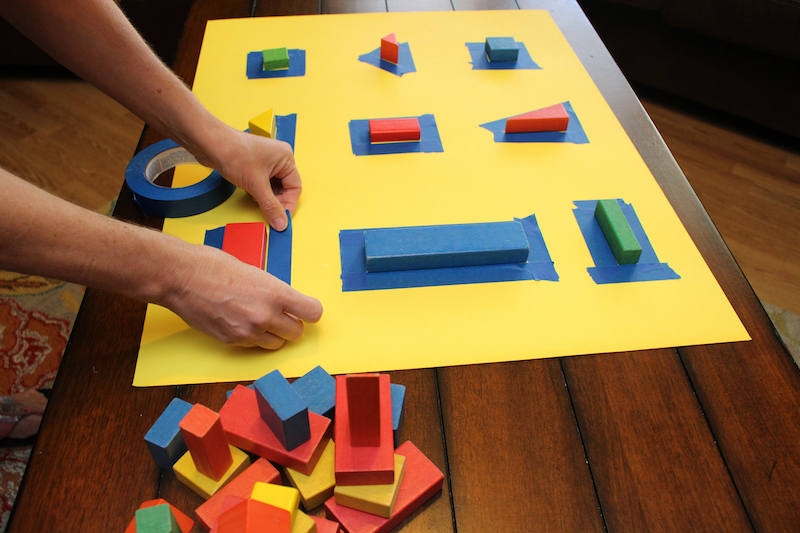
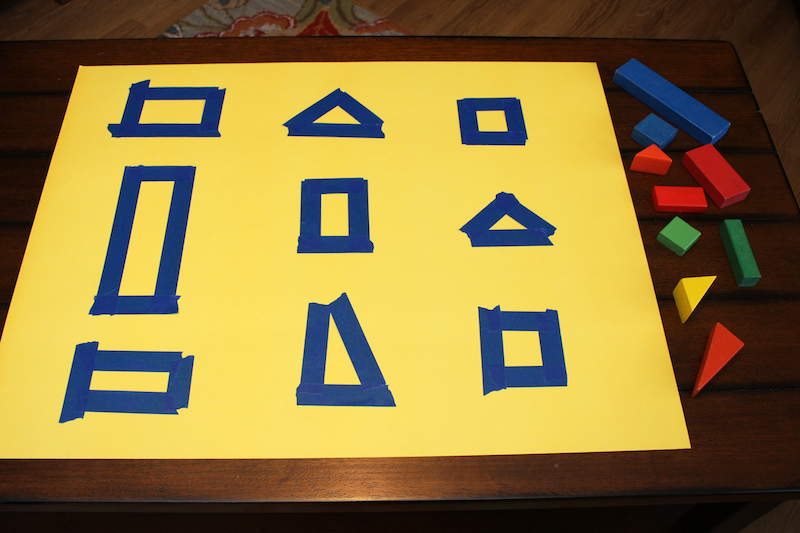
Krystal
Posted at 07:44h, 24 SeptemberThanks for this. 🙂 Simple and fun!
Susan Light
Posted at 19:39h, 25 SeptemberYou are very welcome, Krystal! Hope your little one enjoys it!